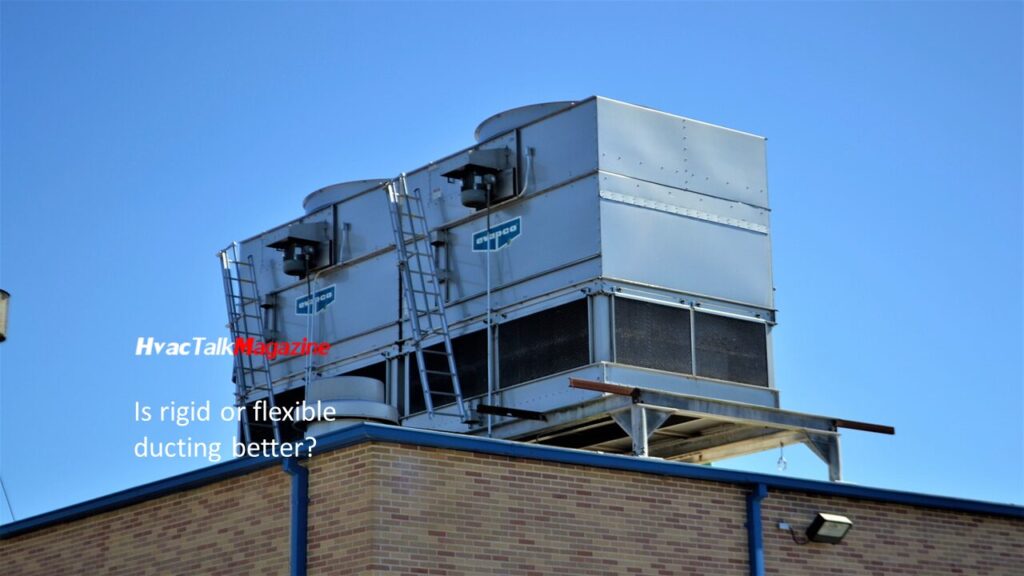Is Rigid or Flexible Ducting Better? Which Duct is More Efficient?
Choosing the right ductwork for your HVAC system is crucial for ensuring optimal performance, energy efficiency, and indoor air quality in your home. The two primary types of ducting are rigid and flexible (often referred to as Alumaflex). Each type has its own set of benefits and potential drawbacks. Is rigid or flexible ducting better? In this blog post, we’ll compare rigid metal ductwork and Alumaflex ductwork, exploring their respective advantages and helping you determine which is best for your home.
Is rigid or flexible ducting better?
Rigid Metal Ductwork: Benefits and Considerations
Benefits of Rigid Metal Ductwork
- Durability
- Longevity: Rigid metal ductwork is known for its durability and longevity. Made from galvanized steel or aluminum, these ducts can withstand wear and tear over many years.
- Resistance: They are resistant to crushing and damage from external forces, making them a sturdy choice for any HVAC system.
- Efficiency
- Airflow: Rigid ducts provide a smooth, unobstructed pathway for air to travel, minimizing resistance and ensuring efficient airflow throughout your home.
- Leak Prevention: With fewer joints and seams compared to flexible ductwork, rigid ducts are less prone to air leaks, which can improve system efficiency and reduce energy costs.
- Air Quality
- Contaminant Reduction: The smooth interior surfaces of rigid ducts are less likely to trap dust, mold, and other contaminants, contributing to better indoor air quality.
- Noise Reduction
- Quieter Operation: Rigid ducts can help reduce noise levels, as the solid walls do not vibrate or make as much noise as flexible ducts when air flows through them.
Considerations for Rigid Metal Ductwork
- Installation Complexity: Installing rigid metal ductwork is more labor-intensive and requires precise measurements and cutting, which can increase installation costs.
- Space Requirements: Rigid ducts are less flexible in terms of routing and may require more space to install, making them less suitable for tight or intricate spaces.
Is rigid or flexible ducting better?
Alumaflex Ductwork: Benefits and Considerations
Benefits of Alumaflex Ductwork
- Flexibility
- Ease of Installation: Alumaflex ductwork is highly flexible, allowing it to be easily routed around obstacles and through tight spaces. This flexibility can reduce installation time and labor costs.
- Adaptability: Its flexibility makes it ideal for retrofitting existing systems or for use in areas where rigid ducts cannot be easily installed.
- Cost-Effectiveness
- Lower Material Costs: Alumaflex ducts are generally less expensive to manufacture and purchase compared to rigid metal ducts.
- Reduced Labor Costs: The ease of installation can translate to lower labor costs, making Alumaflex a budget-friendly option.
- Lightweight
- Handling: The lightweight nature of flexible ducts makes them easier to handle and install, particularly in residential settings.
Considerations for Alumaflex Ductwork
- Durability: Flexible ducts are more susceptible to damage from crushing, punctures, and general wear and tear, which can affect their longevity and performance.
- Airflow Efficiency: The interior surfaces of flexible ducts can create more resistance to airflow compared to smooth rigid ducts, potentially reducing system efficiency.
- Air Leaks: Flexible ducts have more joints and seams, increasing the potential for air leaks if not properly sealed and installed.
- Contaminant Build-Up: The interior of flexible ducts can trap dust and other particles more easily, which can impact indoor air quality if not regularly maintained.
Is rigid or flexible ducting better?
Which Ductwork is Right for You?
Factors to Consider
- Home Layout and Space Constraints
- If your home has a complex layout with tight spaces or numerous obstacles, Alumaflex ductwork may be more suitable due to its flexibility.
- For larger, more open areas, rigid metal ductwork can provide superior durability and efficiency.
- Budget
- If you have a limited budget, Alumaflex ductwork can be a more cost-effective option, both in terms of material and installation costs.
- However, investing in rigid metal ductwork can result in long-term savings through improved efficiency and durability.
- Air Quality Concerns
- For households with allergy sufferers or individuals with respiratory conditions, rigid metal ductwork may be the better choice due to its smoother interior surfaces that reduce contaminant build-up.
- Long-Term Maintenance and Durability
- Rigid metal ductwork generally requires less maintenance and offers greater longevity compared to flexible ducts.
- Flexible ducts may need more frequent inspections and potential replacements due to their susceptibility to damage.
Is rigid or flexible ducting better?
Professional Consultation
To make the best decision for your home, it’s advisable to consult with a professional HVAC contractor. They can assess your specific needs, the layout of your home, and your budget to recommend the most suitable ductwork option.
Tip of the Day
Upgrade your home comfort with a ductless mini-split AC/heating system! Enjoy efficient cooling and heating with customizable zone control for optimal comfort.
👉 Shop now and discover the benefits of a ductless mini-split system. Experience versatile climate control with energy savings and quiet operation!
Post and Find Jobs #HVAC Jobs Center
Conclusion
Is rigid or flexible ducting better? Choosing between rigid and flexible ductwork depends on various factors, including your home’s layout, budget, air quality concerns, and long-term maintenance preferences. Rigid metal ductwork offers durability, efficiency, and improved air quality, while Alumaflex ductwork provides flexibility, ease of installation, and cost savings. By carefully considering these factors and seeking professional advice, you can select the ductwork that best meets your needs and ensures a comfortable, efficient, and healthy home environment. Is rigid or flexible ducting better? What do you say?
Follow Us on Google Chrome
- To get started, switch to Google Chrome Browser
- Already on our site
- Top right, tap the 3 dots
- Bottom right, tap follow
- You are done.
Learn more and join our mailing list for updates.
This post has been written by Team HVAC Talk Magazine. Stay informed and connected with the latest in HVAC—join us for expert advice, troubleshooting tips, and news updates. Don’t miss out, follow us now! #HVACExperts #HVACTips #StayInformed #HVACProTalk








